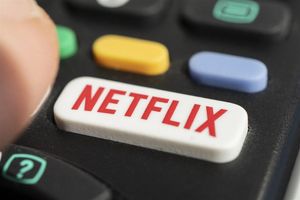
Persistent inflation, a seemingly ubiquitous feature of the global economic landscape, is exacting a heavy toll, particularly on the most vulnerable segments of society. Far from being a uniform economic phenomenon, the current inflationary surge is disproportionately eroding the purchasing power of lower-income households, thereby exacerbating existing inequalities and deepening societal divides. This silent squeeze on household budgets is not merely an inconvenience for the poor; it represents a fundamental threat to their economic stability, quality of life, and the broader fabric of equitable growth.
At the heart of this issue lies the brutal reality that low-income families allocate a significantly larger portion of their earnings to essential goods and services – food, housing, and energy – precisely the categories that have witnessed some of the most aggressive price hikes. This pattern leaves them with minimal financial flexibility and limited capacity to absorb rising costs, unlike their wealthier counterparts who can often cut back on discretionary spending or draw upon substantial savings. The consequence is a widening chasm between the financially secure and those teetering on the edge, with profound implications for both individual welfare and the stability of global markets.
Inflation's Unseen Tax: Minimum Wage Erosion and Global Food Crises
The current inflationary environment represents a substantial and ongoing economic event, fundamentally altering the financial landscape for millions. Its significance lies in its pervasive and regressive impact, acting as an unseen tax that disproportionately burdens those least able to afford it. For minimum wage earners, the story is particularly grim; despite some nominal wage increases, their real wages, adjusted for inflation, are often in decline. This erosion of purchasing power means that a minimum wage earner today can afford less with their income than they could just a few years ago, effectively experiencing a real pay cut. For instance, reports indicate that real wages can fall by as much as 14% when inflation doubles, leading to a "massive hit to the living standards of working people." These households, already operating on razor-thin margins, find their ability to cover basic needs—from nutritious food to adequate housing—severely compromised.
The timeline leading to this moment is characterized by a confluence of factors, including supply chain disruptions post-pandemic, geopolitical conflicts impacting energy and commodity markets, and robust consumer demand fueled by earlier stimulus measures. Central banks, notably the Federal Reserve, have responded by raising interest rates in an attempt to cool demand and bring inflation under control, yet the lag effects mean that the pain continues for consumers. Key players involved are governments, who grapple with fiscal policy to cushion the blow; central banks, tasked with monetary stability; employers, balancing rising input costs with wage demands; and crucially, consumers, particularly those at the lower end of the income spectrum, who are on the front lines of this economic battle. Initial market reactions have seen a flight to safety in some asset classes, while sectors perceived as inflation-resistant have drawn investor attention.
The ripple effect is particularly devastating in developing economies, where rapidly rising food prices due to inflation can trigger humanitarian crises and social unrest. In these regions, where a significant portion of the population lives in poverty and spends 30-60% of their income on food, even modest price increases can push millions into hunger. A 10% increase in domestic food prices, for example, could increase the number of poor in developing Asia by over 60 million. This exacerbates existing food insecurity, leads to malnutrition, especially among children, and can spark protests and political instability, reminiscent of the 2007-08 global food price crisis. Governments in these nations often face immense fiscal strain trying to subsidize food or implement emergency relief, diverting resources from long-term development goals.
The Bifurcated Market: Who Wins and Who Loses?
The uneven impact of inflation creates a bifurcated market, producing clear winners and losers among public companies. As lower-income households are forced to prioritize necessities and cut discretionary spending, businesses that cater to budget-conscious consumers often find themselves in a more resilient position, while those reliant on non-essential purchases face significant headwinds.
Winners in this environment are typically companies providing essential goods and services at competitive price points. Discount retailers like Walmart Inc. (NYSE: WMT) and Costco Wholesale Corporation (NASDAQ: COST) are well-positioned as consumers "trade down" to more affordable options and seek value. Walmart's persistent focus on low prices continues to attract a broad base of shoppers, while Costco's bulk-buy model appeals to those looking to maximize their budget. Similarly, dollar stores such as Dollar General Corporation (NYSE: DG) and Family Dollar (FDO), now part of Dollar Tree, thrive as both lower-income consumers and increasingly, middle-class shoppers, seek out extreme value. Consumer staples companies, including Procter & Gamble Co. (NYSE: PG), PepsiCo (NASDAQ: PEP), and The Coca-Cola Company (NYSE: KO), also exhibit resilience. Their products are daily necessities, and despite price increases, demand remains relatively inelastic. These firms often possess the brand strength to pass on rising input costs to consumers, maintaining their profit margins. Furthermore, auto parts retailers like AutoZone (NYSE: AZO) benefit as financially strained consumers opt to repair older vehicles rather than purchase new ones, extending the life of their existing cars.
Conversely, Losers are largely concentrated in discretionary spending sectors. As household budgets tighten, items perceived as non-essential are the first to be cut. Restaurants and coffee chains, even those offering value menus, can see reduced foot traffic, particularly from lower-income and occasional customers. McDonald's Corporation (NYSE: MCD), for instance, has noted that many lower-income consumers are increasingly opting for home cooking. Food delivery services like DoorDash (NASDAQ: DASH) also face pressure as consumers become more price-sensitive regarding delivery fees and inflated menu prices. The apparel and luxury goods industries suffer as consumers defer purchases of new clothing, high-priced vehicles from companies like General Motors (NYSE: GM) and Ford Motor Company (NYSE: F), or luxury items. Even some mid-tier fashion brands can experience declining demand. Home improvement retailers such as The Home Depot (NYSE: HD) and Lowe's Companies (NYSE: LOW) may face headwinds from elevated mortgage rates, fewer home sales, and a general reduction in renovation projects as consumers rein in large expenditures. In developing economies, any company selling non-essential goods and services faces drastically reduced demand as nearly all household income is diverted to food and basic necessities. Companies heavily reliant on imports also suffer due to currency depreciation, which makes their goods more expensive, a cost they struggle to pass on to an already struggling consumer base.
The Widening Gyre: Industry Impact and Broader Implications
The persistent and uneven impact of inflation on lower-income households is not merely a cyclical economic blip; it represents a significant structural force with far-reaching industry trends, profound ripple effects, and critical regulatory implications. This phenomenon is exacerbating existing inequalities, pushing millions into deeper poverty, and challenging the very foundations of social mobility.
One of the most concerning broader industry trends is the increasing divergence in consumer spending patterns. Companies catering to the affluent may remain relatively stable, or even see increased demand for luxury goods as wealth concentrates. However, businesses reliant on broad consumer demand, particularly those serving middle and lower-income demographics, face sustained pressure. Retailers witness consumers "trading down" to cheaper brands or bulk purchases, leading to market share shifts. The housing market is particularly impacted; renters, often from lower-income brackets, bear the brunt of rising rental costs, which are a major component of inflation and more frequently adjusted than fixed-rate mortgages. The rising cost of construction materials also limits the supply of affordable new homes, further tightening an already strained market and making homeownership an increasingly distant dream for many. In the financial services sector, inflation erodes the real value of savings and fixed-income investments, disproportionately affecting those with limited access to inflation-hedging assets like real estate or equities. This can lead to a shift in investment behavior, but also to a further widening of the wealth gap as the wealthy leverage assets that appreciate with inflation, while the poor see their meager savings diminish.
The ripple effects are profound and multifaceted. Foremost is the exacerbation of poverty and inequality. By continuously eroding purchasing power and the value of savings, inflation acts as a powerful engine for wealth redistribution upwards. Studies indicate that low-income Americans consistently experience a higher effective inflation rate, with the compounded effect significantly widening the wealth gap over time. This leads to a reduced quality of life and hindered social mobility for millions. Children growing up in poverty exacerbated by inflation face increased risks of malnutrition and impaired cognitive development, trapping families in intergenerational cycles of poverty. On a societal level, persistent economic hardship and growing inequality can foster increased social and political instability. Historical precedents, such as the 2007-08 global food price crisis, demonstrate how sharp increases in essential costs can ignite protests and unrest, particularly in developing economies. This creates a volatile environment that can deter investment, disrupt supply chains further, and even lead to severe economic downturns or hyperinflation in fragile states.
Regulatory and policy implications are therefore paramount. Central banks face a delicate balancing act; while raising interest rates is a traditional tool to combat inflation, these measures can also disproportionately harm lower-income households by increasing the cost of borrowing and potentially curbing job creation. There is a growing call for policymakers to consider the disparate impact of monetary policy and to develop more nuanced inflation measures that reflect the cost of living for different income groups. Targeted fiscal policies and strengthened social safety nets are crucial. This includes direct transfers, food subsidies, and policies to ensure minimum wage increases keep pace with, or even outstrip, inflation in real terms. Addressing structural issues like insufficient affordable housing supply is also a critical long-term policy goal. Historically, periods of high inflation, such as the 1970s stagflation in the United States, underscored how supply-side shocks disproportionately harm the less affluent. Conversely, post-World War I hyperinflation in countries like Germany primarily affected the wealthy whose assets were in fixed nominal financial capital. These historical comparisons highlight that while the specific mechanisms can vary, persistent inflation consistently poses a threat to social equity, demanding vigilant and adaptive policy interventions.
The Path Forward: Navigating a Challenging Landscape
The road ahead for persistent inflation and its disproportionate impact on lower-income households presents a complex tapestry of challenges and opportunities, demanding strategic pivots from policymakers, businesses, and investors alike. Both short-term stabilization and long-term structural reforms will be essential to mitigate the widening gulf of inequality.
In the short-term, the financial strain on lower-income households is expected to persist. Consumer pessimism about job security and the broader economy, particularly among these groups, is likely to continue. Their cash buffers and savings remain depleted, and credit utilization, even for middle-income households, has reached concerning levels. This will necessitate continued reliance on value-oriented purchasing and a reduction in discretionary spending. For businesses, this means an ongoing need for operational efficiency, stringent cost management, and a focus on providing essential goods and services at competitive price points. Companies in discretionary sectors must innovate with value-driven offerings or enhance omnichannel experiences to retain customer loyalty.
Looking at the long-term possibilities, there is a significant risk of exacerbated wealth inequality if current trends continue unchecked. Structural inflationary pressures, stemming from global supply chain restructuring and geopolitical tensions, could diverge from the deflationary forces of past globalization, suggesting that inflation may be stickier than previously assumed. Concerns about stagflation—a scenario of persistent high inflation, sluggish growth, and rising unemployment—are growing, particularly with some forecasts pointing to inflation staying above target in the coming years. This challenging environment could lead to a recalibration of inflation expectations across the economy, influencing everything from wage demands to investment strategies.
Potential strategic pivots are critical. For policymakers, a delicate balancing act is required. While central banks must continue to manage inflation, there's an increasing imperative to consider the disparate impacts of interest rate hikes on different income groups. Smart fiscal policies, combining targeted support for the poor with careful spending or tax adjustments, can complement monetary efforts. Policies aimed at increasing the real minimum wage, expanding social safety nets like the Earned Income Tax Credit, and addressing fundamental issues such as affordable housing supply are vital. For investors, defensive positioning will be key. This involves balancing rate-sensitive assets with inflation hedges such as Treasury Inflation-Protected Securities (TIPS) and commodities. A focus on quality companies with strong pricing power and sustainable margins, capable of navigating increased input costs, alongside diversified portfolios that include international markets and real assets, will be crucial.
Market opportunities or challenges will emerge. While weak consumer spending among lower and middle-income groups poses a significant challenge, it also creates opportunities for companies adept at offering value. Sectors with strong pricing power in essential goods and services may continue to perform well. Conversely, luxury goods and real estate might continue to see demand from wealthier individuals. A key challenge will be the central bank's dilemma: how to cut rates to support growth without reigniting inflation, and how to maintain higher rates without deepening economic weakness. Finally, declining public trust in capitalism, fueled by inequality and inflation, could lead to increased regulatory scrutiny and a greater emphasis on ethical investing and corporate social responsibility.
Ultimately, the confluence of persistent inflation and rising inequality necessitates a concerted effort. The most likely scenarios range from a continued "K-shaped" recovery, where wealthier households benefit while lower-income ones struggle, to a challenging period of stagflation. A "soft landing," where inflation is tamed without a severe recession, remains the most optimistic but difficult outcome. However, a scenario of policy-driven improvement, through effective fiscal and monetary policies aimed at both inflation and inequality, could lead to a more equitable distribution of economic benefits and a long-term reduction in inflationary pressures. The coming months will reveal the efficacy of current interventions and the willingness of stakeholders to address these pressing issues head-on.
A Reckoning with Reality: The Enduring Impact of Inflation-Driven Inequality
The current era of persistent inflation is more than just an economic statistic; it is a profound societal challenge, particularly for lower-income households. The comprehensive research paints a stark picture: the relentless erosion of purchasing power, stagnant real wages for minimum wage earners, and the devastating impact of rising food prices in developing economies are collectively deepening existing inequalities and threatening social cohesion on a global scale. This is not a fleeting phenomenon but a pervasive force that continues to reshape economic realities and exacerbate vulnerabilities for those least equipped to bear the burden.
The key takeaways are clear: inflation acts as a regressive tax, disproportionately hitting the poor who spend a larger share of their income on necessities. This creates a challenging environment for businesses reliant on broad consumer spending, while those offering value and essentials may find opportunities. The ripple effects extend beyond economics, touching social stability, human development, and even political landscapes. Historically, while inflation's exact impacts have varied, its capacity to widen societal divides remains a constant.
Moving forward, the market is likely to remain bifurcated, rewarding companies with strong pricing power in essential goods and those catering to budget-conscious consumers. Discretionary sectors, however, will face ongoing pressure. Investors should prioritize resilience, diversification, and a keen eye on companies' ability to navigate a high-cost environment. For policymakers, the call for targeted interventions—ranging from effective social safety nets and progressive taxation to addressing structural issues like housing supply—is more urgent than ever. The dilemma for central banks in balancing inflation control with equitable economic growth will continue to be a defining feature of the financial landscape.
In final thoughts, the significance of inflation-driven inequality cannot be overstated. It challenges the fundamental promise of economic opportunity and threatens to entrench disadvantage across generations. What investors should watch for in coming months includes the trajectory of inflation, particularly in essential goods and services; the responsiveness and effectiveness of government fiscal policies; shifts in consumer spending patterns; and the ongoing debate surrounding wage growth versus price increases. The long-term stability and fairness of our economic systems hinge on our collective ability to address this silent, yet profound, squeeze on the world's most vulnerable.





